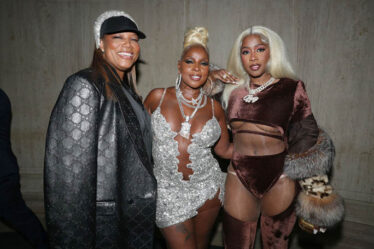
There’s the slightly too spacious chambre de bonne; the endless sequence of overly attractive Frenchmen popping up like marionettes on every street corner. There are the personal-brand-building selfies with the onscreen likes ticker. And then, of course, there are the American-in-Paris Barbie outfits.
For anyone who has ever spent extensive time in Paris, however, the styling on the Netflix series Emily in Paris, which has been renewed for a fourth season, is bound to be the most cringe-worthy trigger of them all. In the three years that I lived in France, I never once witnessed sartorial amalgamations like Emily’s on the streets of Paris, let alone French offices (Paris Fashion Week being the sole exception). In fact, my own prework routine often included the tried-and-trusted (and Coco Chanel–coined) adage “Before you leave the house, look in the mirror and take one thing off,” if for no other reason than to ward off commentary from my colleagues. Emily never takes anything off. Instead, she layers on accessories by the truckload, sending our eyes darting around the screen, absorbing fragments of her looks (The beret! The gloves! The white go-go booties!) without ever getting a sense of the full picture. As I gobble down the series with the greed I normally reserve for Haribo candy, the only thing running through my mind is this: I wish I could hear some French commentary on these looks. And so I reach out to a few Parisiennes to get their take.
©Netflix/Courtesy Everett Collection
“Hum…allergic? Epidemic?” quips Stéphanie Delpon, the cofounder of Parisian creative agency Pictoresq, before cutting back on the sarcasm in favor of more objective analysis. “To put it simply, Emily is not my style. It’s not the items she wears per se that I don’t like. It’s the accumulation—the pink foulard, the pink and violet hats, the curled hair, the superimposing of patterns and layers of flashy colors.” She adds that she would happily adopt some of the individual pieces that constitute Emily’s wardrobe, such as her collection of brightly colored Chanel bags (financed by the same clandestine trust fund of every other Darren Star–produced protagonist, presumably). However, like most Parisiennes, she would wear them as the key piece of an otherwise pared-down outfit, rather than as part of a kaleidoscopic jumbo puzzle. “The French style is all about creating space to breathe, carving out empty zones where beauty and character can emanate naturally.”
Mathilde Carton, editor in chief of French Grazia, is quick to point out that Emily’s outfits feel out of touch with reality, both from a sartorial and a practical perspective. “From a fashion point of view, they are too bright, too showy, too cartoonish, and not versatile enough to be worn through the day,” she says. She points out that the high heels that Emily struts around in on a daily basis lack any sort of functionality and practicality in a walking city like Paris, where traffic congestion has one running down Métro halls all day.
Some wonder if Emily’s outfits are intentionally tasteless to underscore the difference between her and the Parisian counterparts. “Her wardrobe is absolutely not in touch with her environment, exactly like her character who doesn’t care about fitting in,” says Carton. Emily’s sartorial nemesis appears to be her neighbor’s girlfriend, Camille, whose natural, fresh look is beloved by all. “From her pinstripe black blazer to her silver dress in the art gallery, to the polka-dot dress with Dr. Martens platforms, to her Anna Karina vibe en route to the countryside in her red convertible—the stylist did a really great job with her,” says Parisian journalist Stéphanie Chermont.



